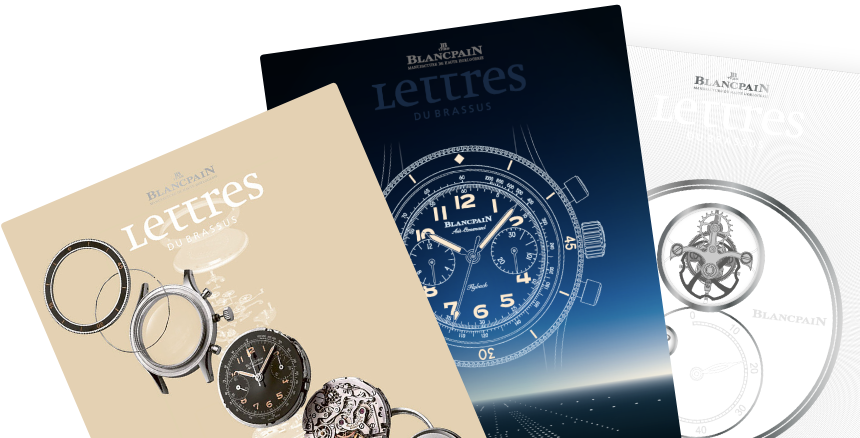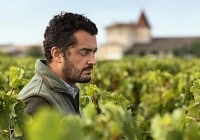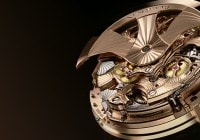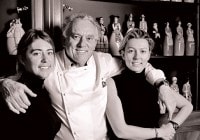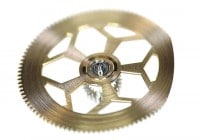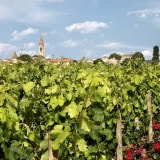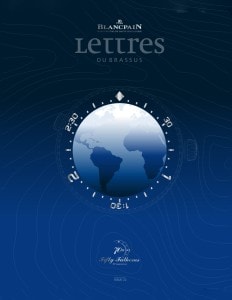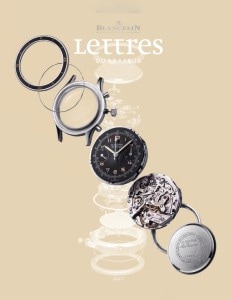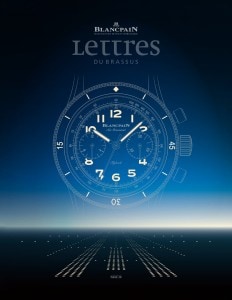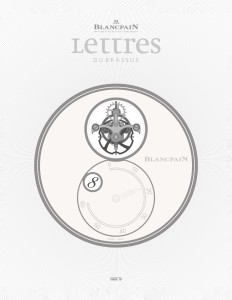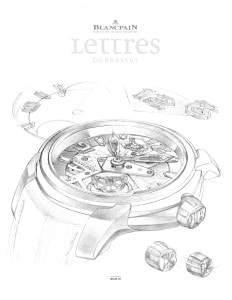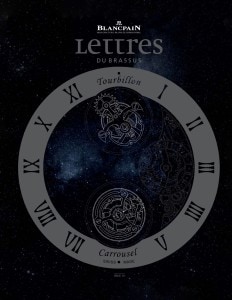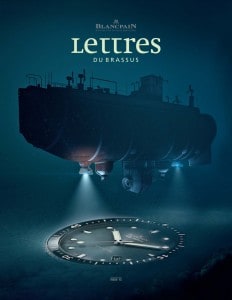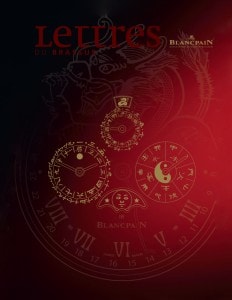
Search in Issues
Chapters
List of parts
Chapter 2
PETRUS
What sets Petrus apart as the most distinguished, storied and sought after wine in Pomerol?

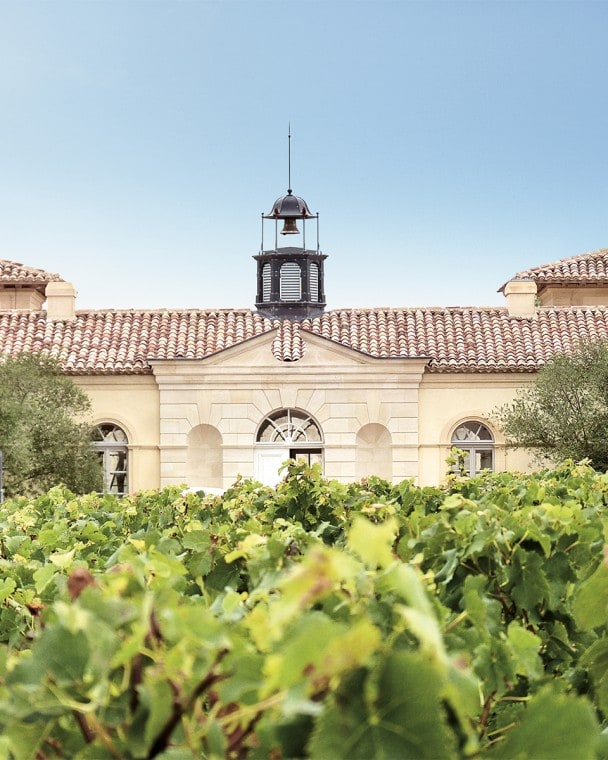
Winemaking on the Petrus hill DATES BACK TO 1745.
“It’s the hill.” Olivier Berrouet, the second generation wine maker from his family at Petrus, gestic- ulates toward a barely perceptible swelling of the ground in the vineyards opposite the Petrus chai. To our Swiss and Idaho sensibilities there is no visible hill at all. To put it in other terms, nothing by way of a rise that would cause even a novice weekend bike rider to notice that there had been a change in grade, much less encourage a downshift. Whether or not it would be recognized as a hill were it placed not near Libourne but in Switzerland’s Lavaux, Berrouet is explaining what it is about Petrus that sets it apart it from its Pomerol neighbors, that makes Petrus the most distinguished, storied, sought after, and, yes, most expensive wine in the region. The “hill”, in fact, far from being a towering rise above ground, is largely a geological phenomenon below the surface. For the rest of what is known as the “right bank” in Bordeaux, Saint-Émilion and Pomerol, approximately a million years ago the Dordogne river deposited gravel on the clay surface of what formerly had been the ocean floor dating back another 39 million years. Everywhere, that is, except for the privileged now underground clay hill of Petrus. As it was in fact a clay hill, the gravel was deposited broadly around it but not upon its summit. So the clay, that elsewhere lies buried in gravel deep below the surface, actually rises to the surface at Petrus. It is this clay, blue in color, that gives Petrus its unique power and breed.
Berrouet’s explanation certainly spotlights an important quality factor, but a deeper look turns to Petrus' history and broader winemaking philosophy. Wine making here began in 1745 when neighboring Vieux Château Certan first planted the hill. Before the turn of the century, noticing the excellent wine being produced by Vieux Château Certan, the Arnaud family bought the hill parcel, naming their winery Château Petrus Arnaud.
Omitted from the 1855 CLASSIFICATION because it was located near Libourne, Petrus set out to establish its ranking through its devotion to quality.
Success arrived when the Arnaud’s won a gold medal at the 1878 World’s Fair. Under their stewardship, the vineyards were transformed. Previously planted with a broad variety of grapes, between 1880 and 1890 the vineyards were entirely replanted in Merlot, which today is used exclusively for the wine.
Beginning in 1925 Mme Edmond Loubat began to acquire ownership shares in Petrus. Her holding percentage grew over time so that by the arrival of World War II, she was the sole owner. It was her vision that both Petrus, in particular, and Pomerol, in general, were underappreciated, and, as follows from that, undervalued in the market. In part this may have been due to the fact that the famous 1855 classification of Bordeaux châteaux was confined to the Médoc and Graves, omitting Pomerol and its right bank companion Saint-Émilion entirely. Largely this was due to the fact that, in spite of being proximate to Bordeaux, Pomerol and Saint-Émilion were not considered Bordeaux wines at all. They were, after all, on the other side of the river near Libourne. Although Pomerol and Saint-Émilion wines are often referred to as “right bank wines,” with the main Bordeaux appellations (Saint-Estèphe, Pauillac, Saint-Julien, Margaux, and Graves) being located on the “left bank,” in fact Pomerol is not even on the opposite bank of the same river. The left bank wines flank the Garonne or the Gironde, while Pomerol is on the right bank of the Dordogne, which eventually joins the Gironde. Pomerol and Saint-Émilion, according to the 1855 view, were, therefore, Libournais wines. Thus, this glaring omission from the classification had nothing to do with any quality shortcoming, merely a narrow view of geography. In any event, Mme Loubat set out to rectify the omission and put Petrus on the map. She began by prioritizing quality over quantity in the winemaking ensuring that the substance was there. Demonstrating the strength of her commitment was her response to a murderous frost in 1956. Unlike most others in the region, she did a recépage in the vineyard, which severely pruned the vines, nearly to the ground, a technique which preserved the old vine root stock. Although fully two years of harvests were sacrificed, quality was greatly enhanced.
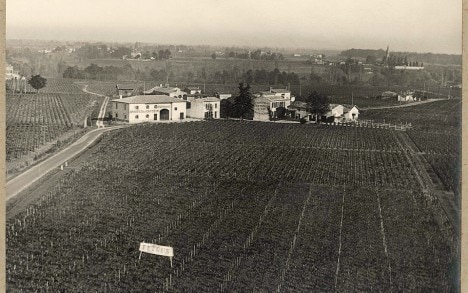
An aerial view of Petrus circa 1950.

Petrus is one of ONLY THREE Bordeaux producers which do not use the word “Château” on the label.
With her energy and dedication to growing the reputation of Petrus there was a bit of moxie and no small touch of marketing genius. In 1947 when the Lord Mayor of London paid a visit to the region, Mme Loubat stepped forward and offered two magnums of Petrus to the Lord Mayor as a wedding gift for then Princess Elizabeth. Not only was the gift widely publicized, she was invited to attend the gala pre-wedding dinner. There was one other marketing dimension to Loubat’s ownership of Petrus. In 1940 she elected to drop the word “Château” from the name, contenting herself with a label that simply said “Petrus.” Today only two other Bordeaux châteaux have followed the practice, both on the right bank.
Rising in parallel with Mme Loubat’s rejuvenation of Petrus in the vineyards, was the Moueix family empire, founded by Jean-Pierre Moueix beginning in 1937.
Moueix began with the establishment of a negociant firm in Libourne, buying and selling right bank wines. One of his principal relationships was with Mme Loubat and Petrus. It was through Jean-Pierre Moueix that Petrus acquired its fame in the United States. Recognizing the importance of the market, Moueix approached Henri Soulé the owner of the fashionable New York restaurant Le Pavillon and convinced him to promote Petrus in the restaurant. Petrus became the favored Bordeaux for many of the glitterati who frequented the Pavillon such as the Kennedy’s and Aristotle Onassis.
Mme Loubat died in 1961. Three years later, in 1964, Moueix made his initial purchase of the stock, acquiring a 50 per cent share. At the same time, he brought with him Jean-Claude Berrouet as the winemaker. Full ownership came in 1969. Since that time the destiny of Petrus has been in the hands of the Moueix family on the ownership side and the Berrouet family on the management and winemaking side. Today, matters have moved generationally: it is Jean-Pierre’s grandson, Jean Moueix, 27 years old, who is the most active member of the Moueix family and Jean-Claude Berrouet’s son, Olivier Berrouet, 37, who is the director and winemaker.

Berrouet, father and son.
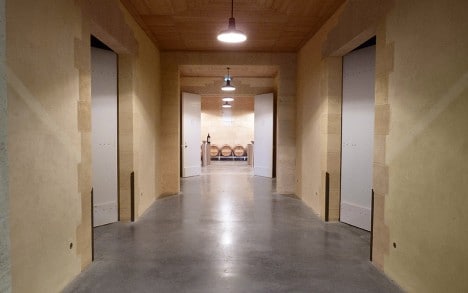
The Petrus APPROACH TO WINEMAKING disfavors artificial methods practiced elsewhere.
Certainly the “hill” plays an important role in cementing Petrus’ place at the top of the world’s wine pyramid, but equally so does the meticulous attention to detail both in the vineyards and in the chai. Unlike most vineyards that are planted with rows oriented in a single direction, Petrus’ vines are planted in different orientations depending upon location. This is to maximize the advantage of its hill’s blue clay soil. When rained upon the clay quickly expands and forms a nearly impermeable barrier to further water absorption, with additional rain merely producing runoff. The different planting orientations are designed to promote this runoff rather than soaking into the ground. For the quality of the wines this is important as it diminishes dilution of the fruit from rainfall. The clay helps in other ways as well as it not only brings minerality to the wine, but prevents the vines from growing too vigorously, both of which enhance quality.
The Berrouet approach disfavors artificial methods practiced elsewhere. He does not believe in the so-called “green harvest” where berries are pruned when small and green in an effort to reduce yield and thereby increase concentration in the wine. Instead, his belief is that the green harvest increases dilution in each remaining berry, even if the overall yield is reduced. Nor does he favor artificially late harvesting. Although it is possible to produce flatteringly lush rich wines that way, at least when the wine is youthful, with time the wine cannot achieve its full aromatic potential. Berrouet is firm setting out his winemaking objectives. He is not crafting for “flash,” not to triumph in young wine tastings, not to produce youthful fruit bombs. Instead his time horizon is 20 years and his decisions are directed to fashioning age worthy wine. A further dimension to his anti-intervention approach is Berrouet’s avoidance of pesticides (preferring more biologically clever solutions such as use of natural pheromone hormones which sexually confuse the insects, reducing their numbers).


Sorting grapes on arrival at the chai.
The decision on WHEN TO HARVEST depends not only on analyses and measurements but tasting of the grapes by the Moueix’s and Berrouet’s.
For him, the greatest challenge is having the confidence to know when to do nothing, said another way to let nature run its course for a better result than with artificial manipulation. This was particularly true in 2003 when a brutal heat wave, known as the canicule, struck France baking the vineyards in 40 degree temperatures. Trusting that nature could handle it, Berrouet left well enough alone and was rewarded with a splendid vintage.
The Moueix’s, both Jean and his father, Jean-François, and the Berrouet’s, father and son, take part in the tasting process, which determines when to harvest. Of course, modern winemaking techniques demand chemical analysis of the grapes to determine sugar content, acidity and other variables, but at Petrus chemistry does not trump skilled palates. The tasting team validates what the chemistry shows as they taste for ripeness and acidity. Sadly, today acidity is all too often overlooked as an essential in wine. However, it is in fact vitally important if the wine is to age well.
As with other top Bordeaux wines ruthless selection of the grapes for vinification into the top wine is a key element to quality. At Petrus the handpicked grapes (all wines within the Pomerol appellation must be picked by hand) arrive and are sorted on an optical sorting machine. If you will, they undergo a “berry scan”. The advantage over a manual scan is that process proceeds more quickly; Berrouet’s desire is to minimize the time the grapes are sitting around. As much as 50% of the harvest is rejected and used for lesser wines than Petrus.
Once safely in the chai, Berrouet has the same philosophy of a deft touch that he practices in the vineyards. Believing that the Merlot fruit is sensitive, the cooling before fermentation is done delicately. The cooling is important as that slows the start of fermentation. During fermentation, there is a gentle pumping of juice over the fermentation cap to enhance the extraction of color, tannins and flavor elements (when the harvest ferments in the vat, the skins and any other solid material float to the top forming a cap; pumping over, as the name implies, consists of taking juice from the below the cap and pouring it back over the top).
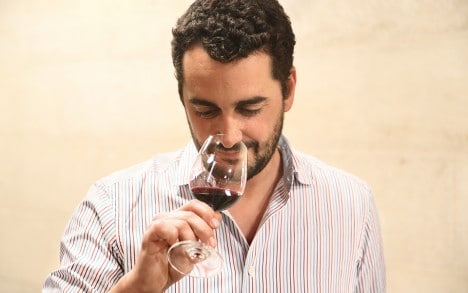
Olivier Berrouet, Director and winemaker.
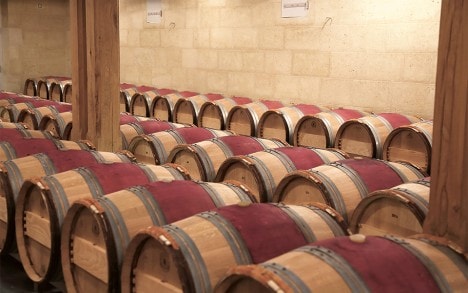
Every single occasion ACCOMPANIED BY A BOTTLE OF PETRUS is seared in memory.
At the same time, Berrouet avoids over extraction which would produce an imbalance in the wine. Throughout this time, he tries to minimize the contact with oxygen. In many ways this approach underscores a great difference between the Merlot of Petrus and the Cabernet which is the dominant grape of the left bank wines. For Cabernet with its harder tannins, oxygen is required to help break them down; ripe Merlot with its more gentle tannins does not require oxygen that would otherwise reduce the aging potential of the wine.
Although Petrus eschews many of what some see as modern innovations such as green harvesting and pesticides, there is one area in which they are pioneers with new ideas. The combination of limited production and insatiable demand for Petrus has greatly elevated its price in the marketplace. As Jean Moueix has observed the ever soaring price levels, he feared that many would be denied the pleasure of his patrimony. And so his program “Carte Sur Table” was born. Together with nine other prestigous Bordeaux châteaux he approached six Parisian restaurants with a novel idea. He would sell them Petrus, joined by the other nine châteaux , at a fraction of the market price provided that they would place the wines on their lists at a modest mark-up and only sell bottles to patrons of the restaurant for drinking during a meal. Carte Sur Table, thus, placed Petrus on these Paris wine lists at a price of approximately 500 Euro. The program has been an overwhelming success, restaurateurs and diners alike reveling in the new affordability for these stellar wines. The number of restaurants in the program has now grown to twelve and Moueix is evaluating the expansion of Carte Sur Table to yet other restaurants in Paris and elsewhere.
For oenophiles, every single occasion accompanied by a bottle of Petrus is seared in memory. Its breed, finesse, complexity, and frankly majesty are so riveting that Petrus naturally becomes the undisputed center of attention and conversation for each special event when it is served. Wine tastings are no exception; tastings that include Petrus set themselves apart.
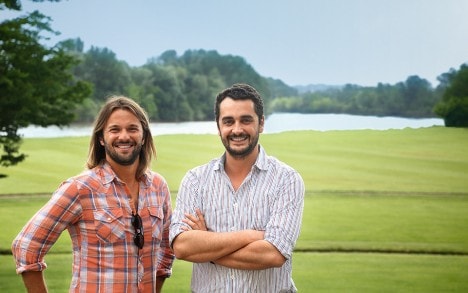
Jean Moueix and Olivier Berrouet.
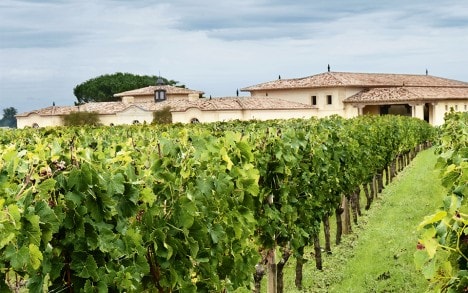
TASTING NOTES
These tasting notes combine the memories and experiences, accumulated over the past three decades of Dr. George Derbalian, the Lettres du Brassus wine expert, and yours truly.
1953 (JK AND GD TASTED 1983).
A monster wine. Deep purple color. Brooding and powerful all supported by massive structure. Legendary.
1961 (GD TASTED IN 1991).
Tasted alongside all the ’61 giants. Tied with Latour at the top. Pretty bouquet, packed with sweet berry saturated flavors. Likely will outlive all the rest of this revered vintage. A monumental wine.
1964 (GD TASTED IN 1999).
In a vertical tasting of landmark vintages of Petrus, tied with the ’66 as the star. Voluptuous, almost Burgundian in its character. Round with waves of beautiful fruit. Can a wine this big be called a “darling”? A monumental wine.
1966 (GD TASTED IN 1999).
Tied with the ’64. Long, linear, elegant, and pure. Doesn’t ram all of its fruit out front. Exceptional length. A monumental wine.
1970 (GD TASTED IN 1999).
Fleshy and fat. A mouthful of wine. Superb. A great wine.
1973 (JK TASTED 2013).
How did Petrus pull this off? With a vintage that was disastrous throughout Bordeaux producing lean, nasty wines, this is a charmer with now fully resolved tannins and lively fruit. Not a heavy- weight but satisfying.
1975 (JK AND GD TASTED 2013).
Astonishing. Deep purple color and not a trace of brick. Dense and powerful with waves of sweet fresh cassis fruit backed by minerals and hints of chocolate. Underneath there is structure and a bit of the firmness that characterizes the vintage. A great wine. For both GD and JK the best Bordeaux of the vintage.
1978 (GD TASTED 1999).
Almost Médoc in its character. Not as rich as ’75. With more recent tastings the wine has become fatter and richer.
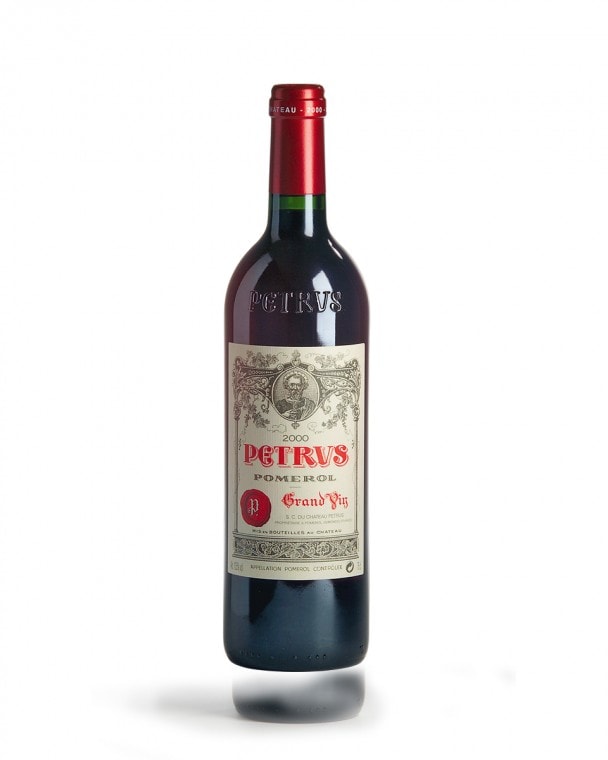
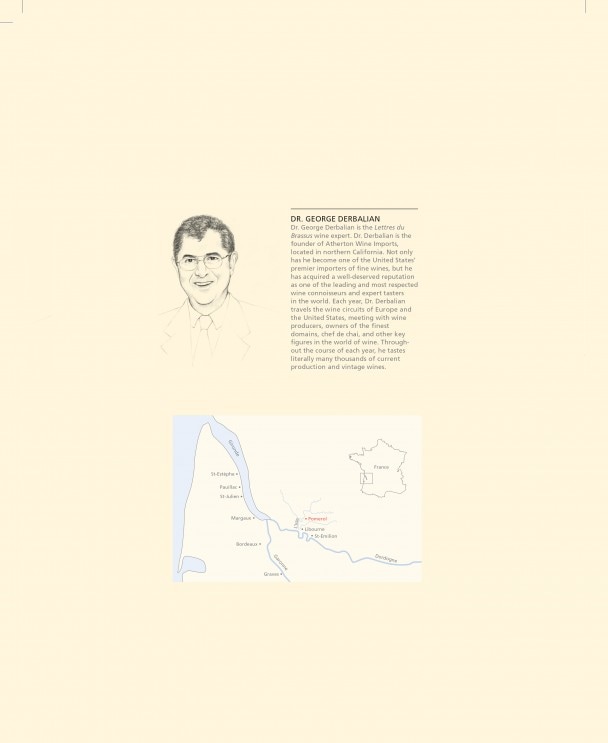
1986 (JK AND GD TASTED 1989).
Tasted blind in a flight of ’86 Pomerol. Firm and brooding in its youth. Not as fleshy as ’89 or ’90 but clearly a wine built to age. Still need to wait for this wine to mature fully.
1989 (GD TASTED IN 1999).
Dense, chewy, structured wine. Packed with sweet fruit. Will age magnificently.
1990 (GD TASTED 1999).
Diplomatic, racy, flows. Seductive with beautiful ripe tannins. In the long run will be surpassed by the ’89, but when young its flash carries the day. A monumental wine.
1993 (GD TASTED 1999).
Not as concentrated as ’90. Well balanced and complete like the ’90 but at a lower amplitude. Fleshy round tanins, particularly remarkable for a vintage that is not well regarded.
2012 (JK TASTED IN 2013).
Remarkable. Surprisingly open and accessible. Deep purple color with blackberry nose. Almost chewy texture revealing currants. Tannins fully ripe and round. Great concentration. Huge finish.
Other issues
Don't miss the latest issue
Sign Up for New Releases